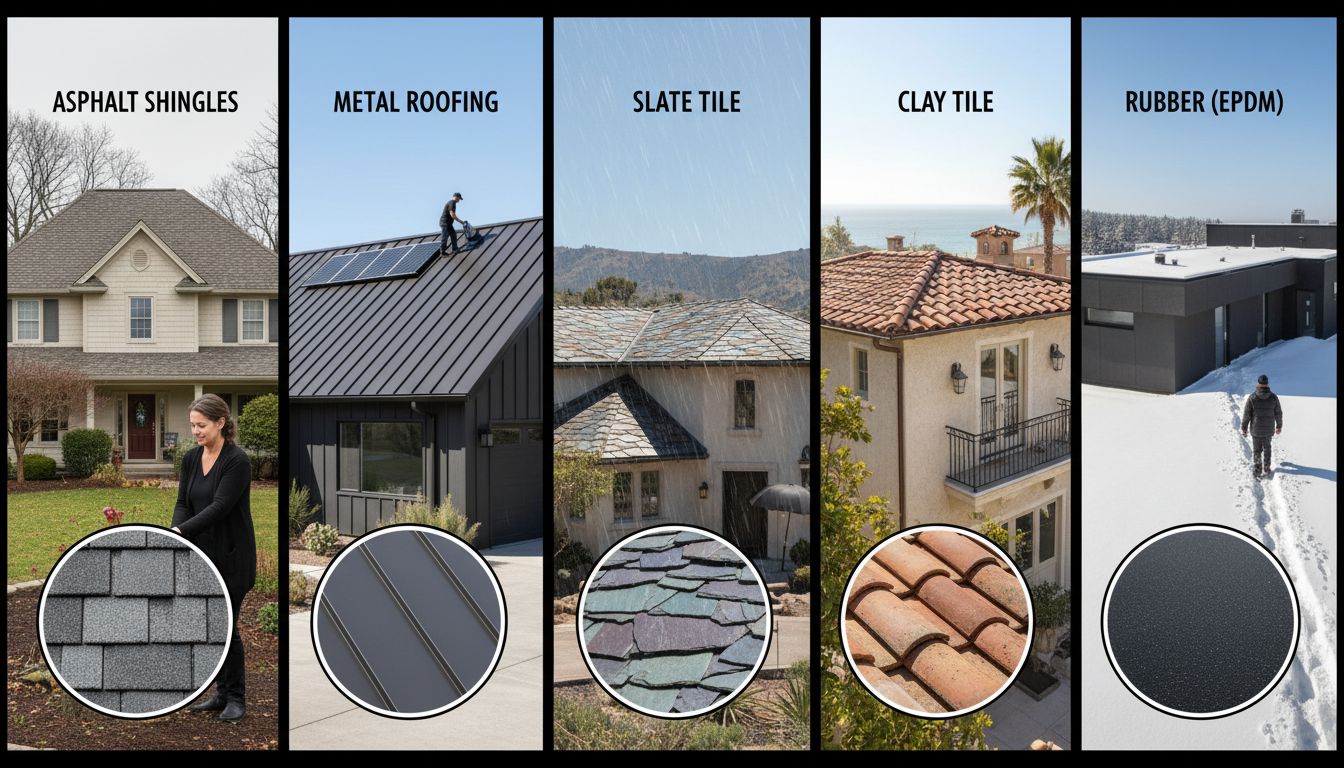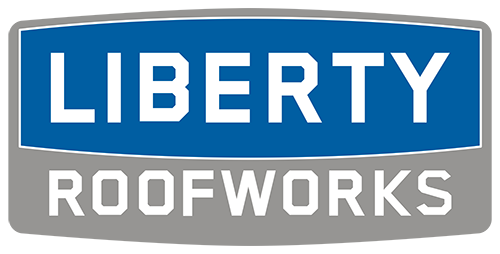Nearly 90 percent of roof leaks could be prevented with regular inspections and maintenance, according to industry experts. Your roof is your home’s first line of defense against weather, but many myths and misconceptions hide the real factors that affect its strength and lifespan. Understanding the truth about residential roofing helps homeowners make smarter choices about materials, installation, and upkeep, which ultimately protects property value and peace of mind.
Table of Contents
- Defining Residential Roofing And Common Myths
- Types Of Residential Roofing Materials Explained
- How The Residential Roofing Process Works
- Key Factors Affecting Roofing Costs And Lifespan
- Common Roofing Issues And Maintenance Tips
Key Takeaways
| Point | Details |
|---|---|
| Material Selection is Crucial | Choosing the right roofing material directly impacts durability, energy efficiency, and aesthetic appeal for homeowners. |
| Understanding Fire Resistance | Not all roofing materials provide the same fire protection; classifications from Class A to C highlight significant variance in safety. |
| Regular Maintenance is Essential | Proactive inspections and maintenance can prevent major roofing issues and extend the lifespan of your roof. |
| Cost vs. Longevity Balance | Initial roofing costs vary greatly; homeowners should consider long-term value and durability over upfront expenses. |
Defining Residential Roofing and Common Myths
Residential roofing is the specialized process of selecting, installing, and maintaining roof systems specifically designed for homes. Unlike commercial roofing, residential roofing focuses on protecting individual living spaces with materials tailored to residential structural requirements and aesthetic preferences. Learn more about roofing systems in our comprehensive guide on roofing systems.
According to the Insurance Institute for Business & Home Safety, residential roofing involves multiple material options with varying performance characteristics. Asphalt shingles, metal roofing, and tile roofs represent the most common residential roofing materials, each offering unique benefits. A prevalent myth is that all roofing materials provide identical fire resistance, when in reality, materials are professionally rated from Class A to C, with Class A delivering the highest level of fire protection.
Energy efficiency represents another critical consideration in residential roofing. Contrary to popular belief, darker roof colors are not automatically less energy-efficient. Modern roofing technologies have introduced advanced reflective coatings that enable darker roofs to reflect significant amounts of sunlight, ultimately reducing cooling costs. Explore the most common residential roof types for different climates to understand how material selection impacts your home’s thermal performance.
Key considerations when evaluating residential roofing include:
- Material durability
- Climate compatibility
- Energy efficiency ratings
- Fire resistance classification
- Long-term maintenance requirements
Understanding these factors helps homeowners make informed decisions about their roof, dispelling common myths and selecting the most appropriate roofing solution for their specific needs.
Types of Residential Roofing Materials Explained
Residential roofing materials represent a critical choice for homeowners, directly impacting a home’s protection, energy efficiency, and aesthetic appeal. Discover the 7 essential types of roofing materials for your home to make an informed decision about your roof’s long-term performance.
According to architectural research, residential roofing encompasses a diverse range of materials, each with unique characteristics. Asphalt shingles, metal roofing, slate, and tile are the most common options, with modern innovations like rubber roofing (EPDM) and TPO membranes expanding homeowners’ choices. Research from the Building and Architecture Safety Consortium highlights that materials like clay tile, concrete tile, and fiberglass asphalt shingles are particularly valued for their superior fire-resistant properties, with Class A ratings representing the highest level of fire protection.
The selection of roofing materials involves careful consideration of several critical factors. Durability, cost, aesthetic appeal, and climate compatibility play significant roles in determining the most suitable roofing solution. Different materials offer distinct advantages:
Here’s a comparison of common residential roofing materials:
| Material | Durability | Fire Resistance | Cost | Climate Suitability |
|---|---|---|---|---|
| Asphalt Shingles | 15-30 years | Class A-C | Low | Most regions |
| Metal Roofing | 40-70 years | Class A | Medium-High | Extreme weather Snow |
| Slate Tile | 50-100+ years | Class A | High | Cold Wet climates |
| Clay/Concrete Tile | 40-50+ years | Class A | High | Hot Dry climates |
| EPDM Rubber | 20-30 years | Class B-C | Medium | Flat roofs Mild weather |
- Asphalt Shingles: Cost-effective, widely available, easy to install
- Metal Roofing: Extremely durable, long-lasting, excellent for harsh climates
- Slate Tiles: Premium appearance, exceptional longevity, natural stone durability
- Clay/Concrete Tiles: Excellent heat resistance, distinctive architectural style
- EPDM Rubber: Flexible, water-resistant, ideal for flat or low-slope roofs
Ultimately, choosing the best roofing material requires understanding your specific home’s needs, including local climate conditions, budget constraints, and long-term maintenance expectations.

How the Residential Roofing Process Works
The residential roofing process is a comprehensive journey that transforms your home’s protection and aesthetic appeal, requiring careful planning and expert execution. Learn the complete step-by-step roof installation guide to understand the intricate details involved in creating a durable, long-lasting roof.
According to home construction experts, the roofing process begins with meticulous material selection and compatibility assessment.
Roof inspection serves as the critical first step, where professionals evaluate the existing roof structure, identifying potential weaknesses, water damage, or structural issues. The home inspector carefully examines the roof’s current condition, measuring its ability to withstand environmental challenges and determining whether repair or full replacement is necessary.
The installation process itself involves several precise stages. According to research from the Building and Architecture Safety Consortium, constructing a fire-resistant residential roof requires strategic design and material selection. Key steps include:
- Roof Deck Preparation
- Remove existing roofing materials
- Inspect and repair underlying structure
- Install protective underlayment
- Material Installation
- Apply starter strips
- Install roofing materials systematically
- Ensure proper overlap and sealing
- Finishing and Detailing
- Install ridge caps
- Add ventilation elements
- Seal potential entry points for moisture
Preparing for a new roof replacement requires understanding these complex steps and working with experienced professionals who can navigate the technical and safety considerations of modern roofing techniques.
Key Factors Affecting Roofing Costs and Lifespan
Understanding the complex relationship between roofing materials, costs, and longevity is crucial for homeowners making long-term investment decisions. Discover the essential factors influencing roof lifespan to make informed choices about your home’s most critical protective layer.
According to architectural research, roofing material selection stands as the primary determinant of both cost and durability. Asphalt shingles represent the most budget-friendly option, typically ranging 15-30 years in lifespan, while metal roofing offers a more substantial investment with potential durability extending 40-70 years. The initial cost difference is significant, but the long-term value proposition varies dramatically between material choices.
Multiple factors contribute to a roof’s overall cost and longevity beyond material selection:
- Climate Exposure: Harsh weather conditions accelerate roof degradation
- Installation Quality: Professional installation critically impacts performance
- Maintenance Frequency: Regular inspections prevent costly long-term damage
- Roof Pitch and Complexity: More intricate designs increase installation expenses
- Ventilation and Insulation: Proper systems extend roof performance
Understanding how “cheap” roof systems can cost more in the long run becomes essential for homeowners seeking sustainable, cost-effective roofing solutions. The most economical approach often involves balancing upfront costs with long-term durability and maintenance requirements.
Common Roofing Issues and Maintenance Tips
Every homeowner faces unique challenges when maintaining their roof, with prevention and early detection being the keys to long-term structural integrity. Discover the 7 most common roofing problems and their solutions to protect your most valuable asset.
According to home inspection research, sun exposure and water infiltration represent the most critical threats to residential roofing systems. Asphalt roofing materials become brittle under prolonged sunlight, while tiny cracks can develop into significant leaks if left unaddressed. Professional home inspectors emphasize the importance of material compatibility and regular assessments to mitigate these potential issues.
Common roofing problems homeowners should watch for include:
- Cracked or Missing Shingles: Immediate vulnerability points
- Water Stains on Ceiling: Potential hidden leak indicators
- Granule Loss on Shingles: Sign of material deterioration
- Sagging Roof Sections: Structural integrity concerns
- Moss or Algae Growth: Moisture retention risk
Learn how to keep your roof maintained and maximize your investment through proactive maintenance strategies. Regular professional inspections, typically recommended twice annually, can help identify and resolve potential issues before they escalate into costly repairs.
Protect Your Home with Expert Residential Roofing Solutions
Choosing the right roofing material and understanding the installation process can feel overwhelming. This guide highlights key challenges like material durability, fire resistance, and energy efficiency that every homeowner must consider. Don’t let common myths or unexpected roofing issues put your home at risk or drain your wallet.
At Liberty Roofworks, we specialize in addressing these exact concerns with tailored services like Residential Roof Repair & Replacements, new roof installations, and storm damage repairs. Our experienced team ensures your roof not only looks great but stands strong against Charlotte’s weather. Act today to secure your home with a roof built to last—visit Liberty Roofworks to schedule your inspection and get a personalized roofing plan that protects your investment for years to come.
Frequently Asked Questions
What are the most common types of residential roofing materials?
The most common types of residential roofing materials include asphalt shingles, metal roofing, slate, and concrete tiles. Each type offers varying durability, cost, and aesthetic appeal.
How does the color of a roof affect energy efficiency?
Contrary to popular belief, darker roof colors can still be energy-efficient thanks to advanced reflective coatings. These coatings allow darker roofs to reflect sunlight and reduce cooling costs, making them viable for various climates.
What are the key factors to consider when choosing roofing materials?
When selecting roofing materials, important factors to consider include durability, fire resistance classification, climate compatibility, energy efficiency ratings, and long-term maintenance requirements.
How can I maintain my roof to extend its lifespan?
Regular maintenance practices like inspecting for cracked or missing shingles, checking for water stains on ceilings, and addressing moss or algae growth are essential. Conducting professional inspections at least twice a year can also help identify potential issues early.
